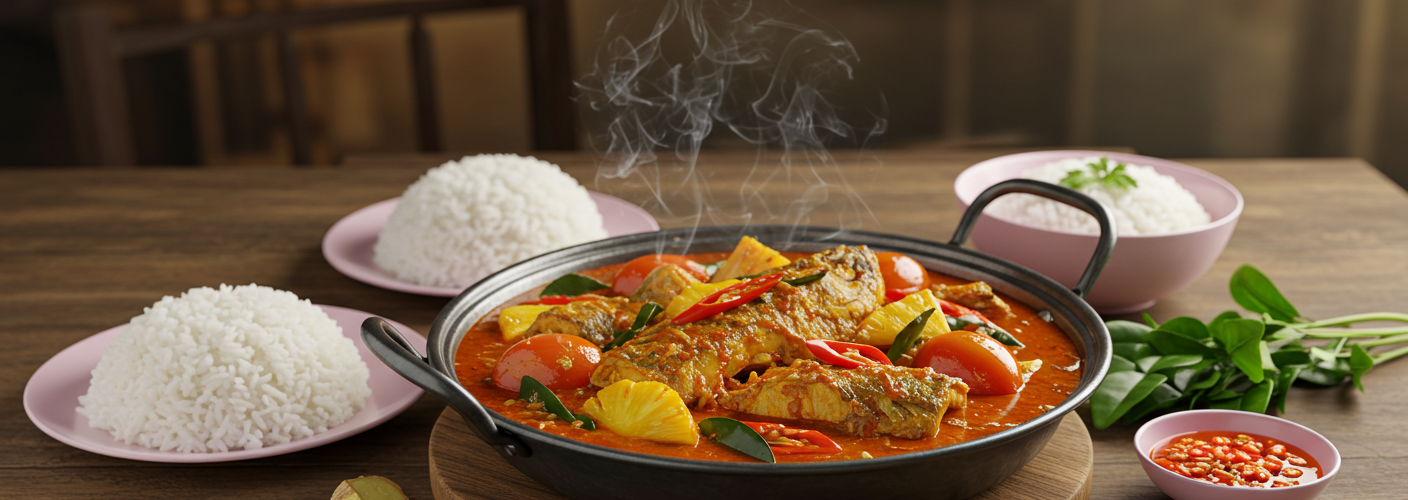Asam Pedas is a cherished dish hailing from Southeast Asia, particularly popular in Malaysia and Indonesia. Known for its bold flavors, this sour and spicy fish stew has captured the hearts and palates of many food enthusiasts. Combining the zesty tang of tamarind with the fiery kick of chili, Asam Pedas is a testament to the region’s rich culinary heritage.
The Essence of Asam Pedas
At its core, Asam Pedas is a fish stew that balances sourness and heat, typically served with rice. It’s made with an array of spices and ingredients that create a harmonious explosion of flavors. The primary ingredient is fish, often complemented by a variety of vegetables such as eggplant or okra, which absorb the stew’s bold flavors.
The key component that sets Asam Pedas apart is its souriness, which primarily comes from tamarind, a fruit that is widely used in Southeast Asian cooking. Tamarind adds a distinct tang while enhancing the overall complexity of the dish. The spiciness usually comes from blended chili paste, which can vary in heat level according to personal preference.
Ingredients and Preparation
The beauty of Asam Pedas lies in its versatility. While the traditional recipe calls for types of fish like mackerel or snapper, you can easily substitute with local or seasonal varieties. Key ingredients generally include:
- Fish: Mackerel, snapper, or any firm white fish
- Tamarind paste: For that signature sour note
- Fresh herbs and spices: Such as lemongrass, galangal, and kaffir lime leaves
- Chilies: To provide the necessary heat, typically blended into a paste
- Vegetables: Eggplant, okra, and long beans are common additions
- Seasoning: Salt and sugar to balance the flavors
Preparation usually starts with marinating the fish in turmeric and salt, giving it a delightful flavor before adding it to the steaming pot. Making the broth involves sautéing the blended chili paste with spices before introducing water, tamarind, and vegetables. The fish is added later to ensure it cooks to perfection without becoming too soft.
Serving Suggestions
Asam Pedas is most enjoyable when served hot over steaming white rice. The rice acts as a canvas, mellowing the stew’s strong flavors and complementing the dish’s heat. Pair it with fresh cucumber slices or a simple salad to add a refreshing crunch. For an authentic experience, serve Asam Pedas alongside sambal, a spicy condiment that enhances the dish further.
Cultural Significance
Beyond its delightful taste, Asam Pedas holds a special place in the heart of Malaysian and Indonesian culture. Often enjoyed during family gatherings or special occasions, it symbolizes togetherness and the importance of sharing meals with loved ones. Culinary traditions surrounding Asam Pedas vary across different regions, with each locality offering its unique twist on the classic recipe.
Final Thoughts
Asam Pedas is more than just a dish; it is a vibrant representation of cultural identity, community, and history. Its ability to bring people together at the dining table speaks volumes about the power of food to connect us all. Whether you’re a seasoned cook or a curious foodie, trying out Asam Pedas will immerse you in the rich flavors and traditions of Southeast Asia, leaving you yearning for more. So, gather your ingredients, and dive into the wonderful world of Asam Pedas for a taste experience like no other!




Add comment